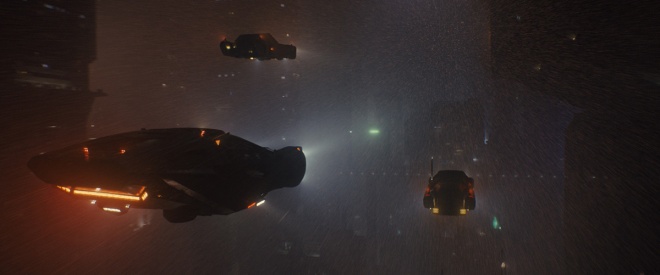
(From left) Faisal Mohammed and Mohammed Shah Nawaz – The architects of the ‘bin’
It takes more than just a few wisps of audacity to publicly call yourself or your work equivalent to a garbage bin. But Faisal Mohammed and Mohammed Shah Nawaz, the founders of Garbage Bin studios, possess immense humility.
Started in 2011 with a few comic stripes on Facebook, Garbage Bin could only muster a mere two ‘likes’ on its page in its first month of operation. Not a great start by any accounts, but the duo weren’t to be cowed down by the underwhelming initial responses.
The gags continued to pour on their pages, and soon, they were viral. Today, Garbage Bin boasts as much as one million ‘page likes’ and just as much followers on Facebook.
Talking of some of their prominent works, the shenanigans of Guddu, his best bud Shan and the rest of the gang, has endeared to the readers no end, whilst another strip ‘Pyaari Maa’ has struck a chord with people of all age groups.
Garbage Bin, today, is more than just a social media page; it’s a rage. And Shah Nawaz holds nothing back in this exclusive interview with Animation Xpress, where he takes us down the memory lane to recall their humble beginnings, the crests and troughs they surmounted on the road, and what’s in the ‘bin’ for its readers in the coming days.
How did the journey of Garbage Bin begin?
In 2011, Anna Hazare’s anti-corruption movement made waves in the country and we developed this game called Angry Anna in three days to capture it. The game was played by over a million people around the globe. Soon, we caught the media’s eye and even received funding offers, but weren’t ready for it at the time.

Angry Anna – The game
Strangely, this proved to be a blessing in disguise because Faisal worked on his sketching and came up with two cartoon characters called Guddu and Shan and started making comics based on them to vent out the frustration. This garnered a lot of positive feedback and thus Garbage Bin was officially started.
Why have you named it Garbage Bin?
The name Garbage Bin is inspired by Mad Magazine as the artists behind it call themselves the ‘Usual Gang of Idiots’ and their work as ‘Garbage’. The Mad Magazine Team is Faisal’s inspiration, so we picked up the name from there.
They say the character of Guddu is inspired by Faisal and Shan by Nawaz. How exactly are you guys and the respective characters relatable? What are the commonalities?
There are a lot of similarities between the duo (Guddu and Shan) and real life Faisal and Shah Nawaz. First of all their appearances – Guddu is chubby with curly hairs, something that resembles Faisal, whereas Shan is lean and hairs with spikes. Now we both are in our thirties, so appearance of the characters is not relatable anymore because of beard and changed hair styles!
Guddu and Shan are fans of video games, while we grew up playing video games like Mario, Contra, Road Rash and Tekken. Guddu and Shan also love to read comics, and we too read a lot of comics in our childhood like Raj Comics, Manoj Comics etc. Guddu and Shan are very fond of watching cartoon shows, whereas we still love to watch cartoon shows despite being in our thirties!
What’s the story behind creating ‘Pyaari Maa’, your most popular comic strip till date?

Actually there is no story behind it. Everyone loves his/her mother and it was started based on the same.
You have often resorted to using some common slangs in your illustrations. Hasn’t that ever landed you in hot water?
Luckily, we never managed to land in any type of controversy. We admit that we’ve used some common slangs here and there, but we always tried not to hurt any particular community or any individual’s sentiments.
When you sit to sketch a new comic strip, how do you go about it? What’s the thought process?
Usually, the gags are born out of ordinary conversations. We make a note of them immediately it is mouthed. When Faisal is working on a gag, he goes to these ideas and thinks on devising something on these lines. He then starts designing the rough gag on his laptop.
Once complete, he sends the rough gag to his close circle of friends via messenger or Whatsapp. If responses are positive, then we go ahead with cleaning and finishing the gag. But if they are negative, he goes back to his laptop to redesign.
Who’s your inspiration?
Faisal is heavily inspired by the artistes from MAD magazine, who have always labelled themselves as garbage, despite their work being top notch.
You have over a million followers today on Facebook. Did you ever anticipate reaching this far when you started out?
We don’t even know how we got here. We think that the success of Garbage Bin gags is to make one realise that every middle-class kid during the 1990s lived a similar life with almost the same everyday incidents and accidents.
A comic strip of your own that’s your personal favourite or close to your heart?
My favourite gag is when Guddu’s mother unveils her talent of making a rough notebook using clean pages from last year’s notebooks.
What are you currently working on?
We are currently working on animation series of Guddu and gang with popular YouTube channel TVF. It is expected to be completed by the end of this November.
What advice would you give to the budding cartoonists and illustrators?
Be yourself and don’t let others demotivate you. And also work hard!
The post Gags from the garbage – An interview with Garbage Bin Studios co-founder Shah Nawaz appeared first on AnimationXpress.



















